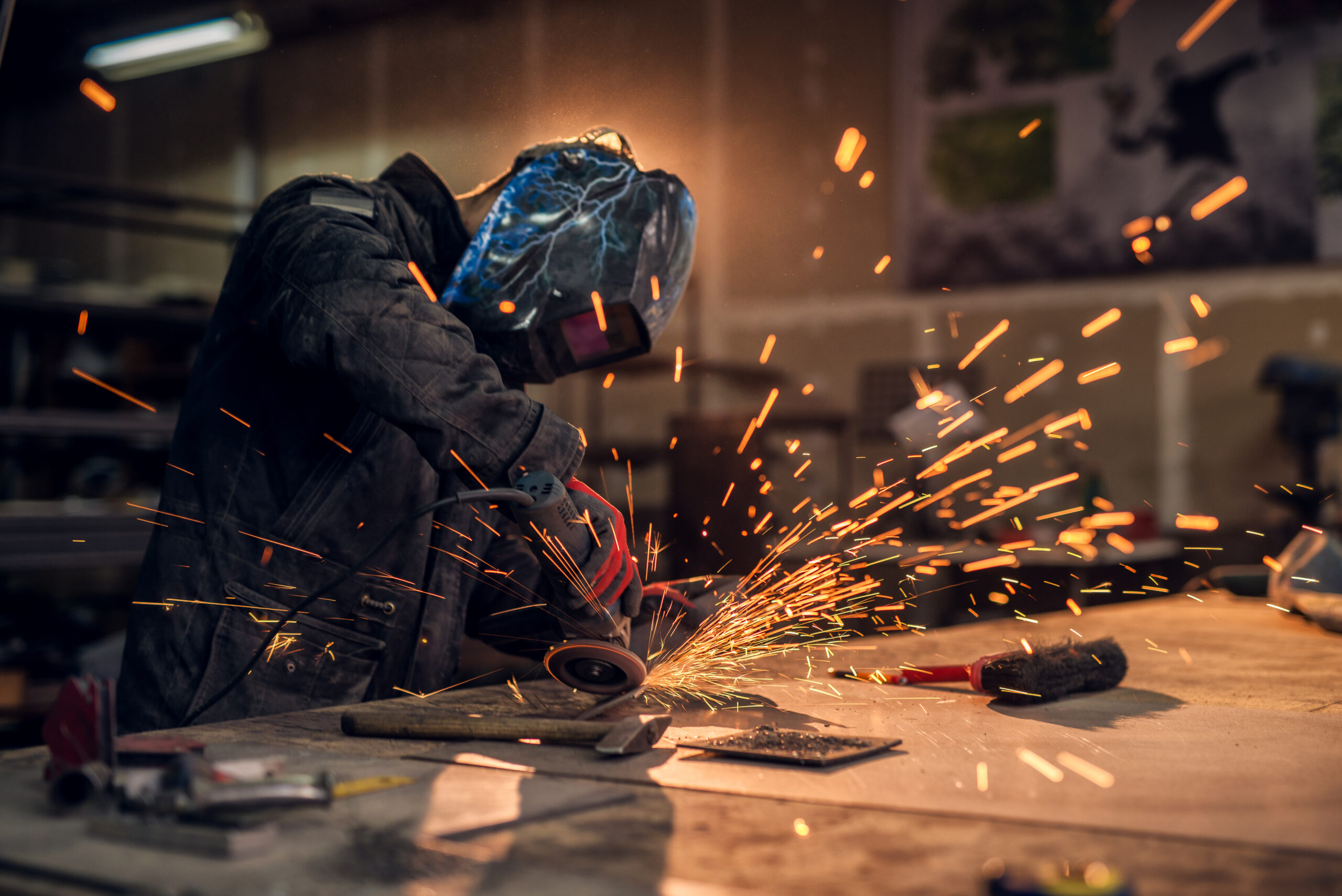
Any type and size of complex structure and any type of welding, joining technique is possible with us. Just share your drawings and we’ll be ready with the designs and structure. We’ll also share 3D model before commencing the assembly process and ensure the dimensions are met to the best possible!
Both fabrication and welding processes requires a solid understanding of materials and safety practices. The choice of techniques depends on factors like the project requirements, material type, budget, and desired outcomes.
Fabrication involves the cutting, bending, shaping, and assembling of metal materials to create finished products. It encompasses various techniques and processes, including:
1. Cutting:
- Shearing: Straight-line cutting using shearing machines.
- Plasma Cutting: Uses a high-velocity jet of ionized gas to cut through metal.
- Laser Cutting: Utilizes a focused laser beam to cut precise shapes in metal.
- Waterjet Cutting: Uses a high-pressure jet of water mixed with abrasive material to cut through metal.
2. Bending and Forming:
- Press Brakes: Machines that bend metal by applying force with a hydraulic or mechanical press.
- Roll Bending: Involves passing metal through rolls to shape it into curved or cylindrical forms.
3. Machining:
- Machining processes such as drilling, milling, and turning are used to create precise holes, shapes, and features in metal parts.
4. Joining:
- Welding: Joining metals by melting and fusing them together with a filler material. Various welding techniques include MIG, TIG, and stick welding.
- Brazing: Joining metals using a filler material with a lower melting point than the base metals.
- Soldering: Similar to brazing but with even lower melting point filler materials.
5. Assembly:
- Assembling components using techniques like riveting, bolting, and fasteners.
6. Finishing:
- Processes like deburring, grinding, sanding, and coating to improve appearance and remove sharp edges.
Welding:
Welding is a specific process within fabrication that involves joining metals by melting their edges and fusing them together. Different welding techniques and methods are used depending on the material, joint type, and application:
- MIG (Metal Inert Gas) Welding: Uses a consumable wire electrode and shielding gas to create strong and efficient welds.
- TIG (Tungsten Inert Gas) Welding: Uses a non-consumable tungsten electrode and filler material to create precise and high-quality welds.
- Stick Welding (Shielded Metal Arc Welding): Uses a consumable electrode coated in flux to create welds. It’s versatile and can be used in various environments.
- Flux-Cored Arc Welding (FCAW): Similar to MIG welding but uses a tubular electrode filled with flux, eliminating the need for external shielding gas.
- Submerged Arc Welding (SAW): Utilizes a granular flux to shield the arc, often used for heavy-duty applications and thick materials.
- Resistance Welding: Involves passing an electric current through the metal parts to be joined, creating heat at the interface and forming a weld.
- Laser Welding: Uses a focused laser beam to create precise and high-energy welds, often in industrial and precision applications.

